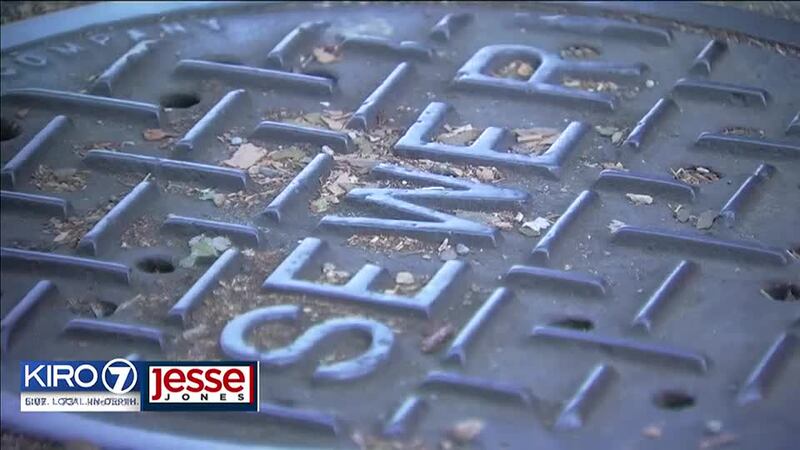SEATTLE — Jenell Hicks’ Seattle home has flooded twice, all because of a tree.
Its roots crept their way into the old clay pipe. And that busted her side sewer.
“And because everything the water touched, because it was sewer water, I had to get rid of it.”, Janell remembers painfully.
She had to refinance her wet home to pay the $60,000 in cleanup costs.
“What if I didn’t have a job where I worked for King County, which has a union that pays me a living wage? I would have been stuck.”
On her sewer map, you can see the side sewer and a blob in green ink directly over it, which is the sewer-busting tree.
“Honestly, around town, you see that on pretty much every block. You have sewers within, you know, just a few feet of trees within the right of way, " said Tim Walsh, Jenell’s plumber.
Jenell believes the city should pay for sewer repair and the damage to her home. Why?
“How could it pass inspection with the tree sitting on top of the sewer line? How does it pass inspection with the no clean-out trap?”.
The city says the tree is not theirs.
It also doesn’t know if it was permitted, and it should have been when it was planted in 1996.
“It’s a huge problem”, says attorney Mike Daudt. He is an expert in sewer cases. He says the city has a legal out. It’s called the Public Duty Doctrine.
“So, under the public duty doctrine, the cities are immune from anything caused by or related to a permitting decision. So even if a city issued your permits and yeah, go ahead, plant a tree here. They have no liability for that”, Daudt explains.
If the city fails to permit the tree, it’s still on the homeowner.
Only if it’s a tree owned by the city, and that’s on a case-by-case basis or if the backup starts from its mainline will the city be held responsible.
According to the city, more than 35,000 side sewer permits have been completed for construction or repair since 2015.
More than 4,000 are listed as emergency work. According to the plumbers we talked to, that’s most likely caused by root damage.
And yet, only 161 cases were filed against the city for root damage from May 2013 to July 2024.
I contacted the City Attorney, the Department of Finance, and the Department of Transportation, but no one would go on camera and discuss this issue.
“Yeah, I’m from New York. I, of course, said some good words and was like, are you kidding me?”, says Bobbi Lutack.
She has plenty to say. They’re worried about a whole lot more than one tree or one house.
“From the side of my house down to the alley, I know it’s at least 100ft. It’s kind of unheard of. That is what they said”, Lutack explains.
They’ve paid at least $50,000 for multiple side sewer repairs and thousands more to protect the offending tree.
“And don’t touch that tree. Do not harm that tree in any way, shape, or fashion, or it will be $50,000 for me to replace it, plus a fine.”
Your best protection according to Tim Walsh from Seattle Pipeworks is to have your side sewer scoped and checked for roots yearly.
“Depending on the species, the tree, those roots, different species roots grow more aggressively than others”, Walsh says.
And it’s costly advice Jenelle has had to take, “But if you don’t know, it’s going to cost you $60,000.
I won’t let that happen to me again. You can’t afford it.”
©2024 Cox Media Group








